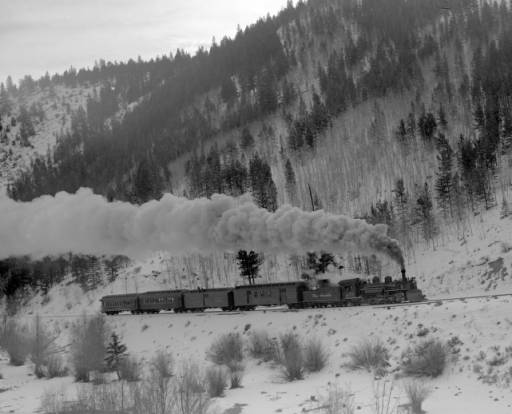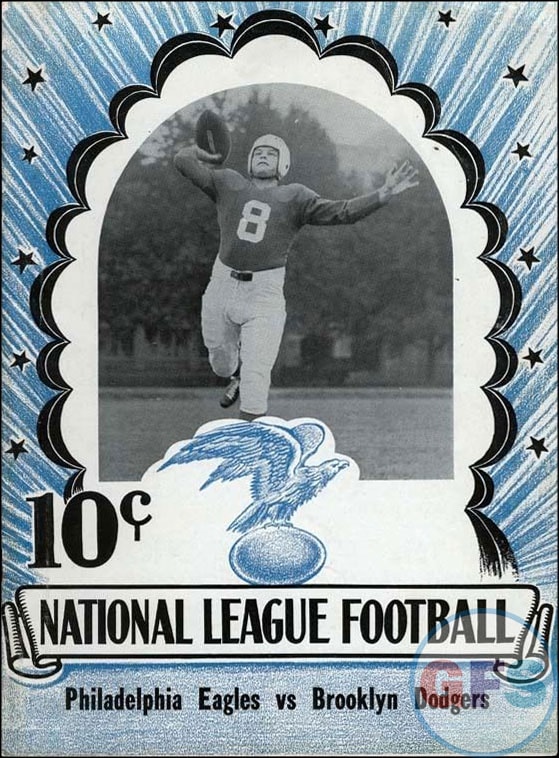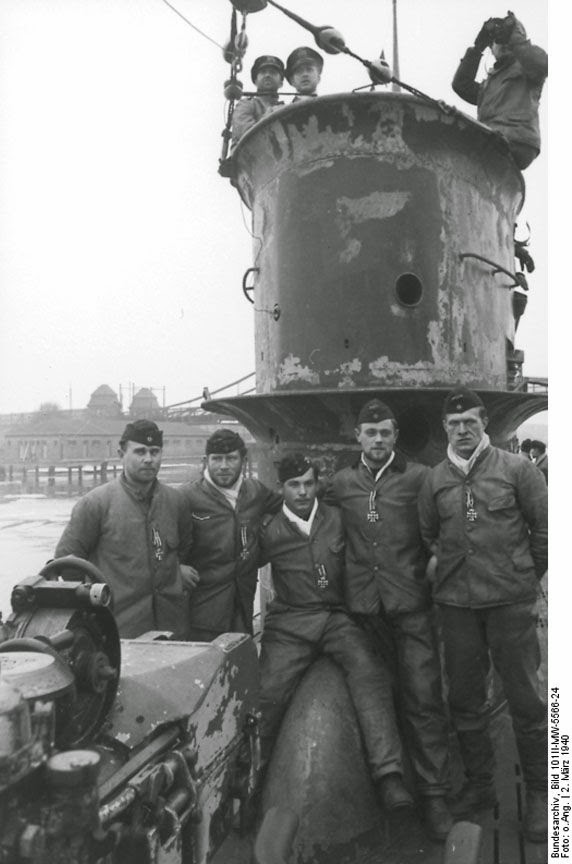Sunday 17 November 1940
 |
| A parade in Denmark in support of a fascist takeover of the country. This is a rally by the DNSAP (National Socialist Worker's Party of Denmark) at Rådhuspladsen on 17 November 1940. While the DNSAP is favored by Hitler, it does not play an actual role in the Danish government, which Hitler prefers to keep independent at this time. The DNSAP is always broadly unpopular with voters. A successor to the DNSAP exists in the 21st Century and occasionally fields candidates to run for local office (without success). Source: National Museum of Denmark. |
The other sectors of the front are reasonably stable, with the Greeks on the attack. The Greek Liuba Detachment advances along the coast in the Thesprotia sector, while the 8th Infantry Division advances toward the Kalamas River. The Greek 2nd Infantry Division advances in the Negrades sector. Near Koritsa, the Greek 9th, 10th, and 15 Infantry Divisions make progress.
 |
| News of the World, 17 November 1940. |
During the day, the RAF attacks invasion ports. After dark, RAF Bomber Command sends a raid against an oil installation in the Ruhr river valley at Gelsenkirchen, and also sends planes against the U-boat pens at Lorient and various Luftwaffe airfields. The RAF also bombs Hamburg for the second consecutive night, an attack which receives wide play in the London media as retaliation for the "murder raids" on Coventry.
The Luftwaffe loses two competent pilots in action today, Oblt. Eberhard Henrici, Staffelkapitän of 1./JG 26 (seven victories) and Roloff von Aspern of JG 54 (18 victories).
Adolf Galland of JG 26 gains three victories today, his 53rd, 54th, and 55th.
German night fighter pilot Egmont Prinz zur Lippe-Weißenfeld scores his first victory during the night of 16/17 November (at 02:05), a Vickers Wellington bomber from RAF No. 115 Squadron. This also is his first encounter with the RAF. Some guys just "have it." The prince commands an independent night fighter commando unit based at Schiphol airport.
Battle of the Atlantic: U-137 (Kptlt. Herbert Wohlfarth), on its third patrol out of Lorient, is perfectly positioned today in the sea lanes several hundred miles west of County Donegal, Ireland. Yesterday, it sank a "romper," that is, a freighter which had outrun its convoy, Convoy HG 46, and thus was unprotected. Today, all that Wohlfarth must do is sit right where he is, and the convoy will come to him. And, sure enough, it does.
U-137 torpedoes and sinks 1044-ton British freighter Saint Germain, which is carrying pit props from Leixoes to Port Talbot. The attack is at 20:14, and the ship takes a day to sink. Everybody on board is saved and taken aboard escort HMS Mallow.
U-137 also torpedoes 1316-ton Swedish freighter Veronica, which is en route from Aguiles to Barrow, a bit later at 20:40. The Veronica is carrying a cargo of 1800 tons of ore and thus sinks quickly. There are only three survivors, while 17 perish. The survivors are fortunate to be picked up by a British fishing boat.
Royal Navy minelayer Teviotbank and destroyer HMS Icarus lay minefield BS 47.
Convoy WS.4B (Winston Special) departs from Liverpool. It is a major military convoy with numerous passenger liners converted to military purposes:
- Andes (25,689 tons)
- Duchess of Atholl (20,119 tons)
- Viceroy of India (19,267 tons)
- Otranto (20, 026 tons)
- Orcades (23, 456 tons)
- Strathallan (23,772 tons)
- Strathaird (22,284 tons)
- Empress of Canada (21, 517 tons)
- Reina Del Pacifico ( 17,702 tons)
- Strathnaver (22,283 tons).
Convoy OB 244 departs from Liverpool, Convoy FN 336 departs from Southend, Convoy FS 33 departs from Methil, Convoy HX 89 departs from Halifax. Convoy BHX 89 departs from Bermuda, but for some reason quickly returns there (perhaps due to weather).
 |
| One of the destinations of Winston Special (WS) convoys is Egypt, which is where this photo is taken on 17 November 1940. The British are unloading a cruiser tank sent from England. (AP Photo). |
The planes are sent off in two waves, each led by a Skua, and only four Hurricanes from the first wave and none from the second reach Malta. The Skua leading the first wave arrives safely at Malta, while the second gets lost (apparently after the Hurricanes all ditch) and crash-lands on Sicily.
A Short Sunderland flying boat sees two of the Hurricanes in the first wave ditch and lands to pick up a survivor. The Hurricane pilot, Sergeant R A Spyer (a very lucky man), reports that he simply ran out of fuel. There are many reasons why a plane can run out of fuel short of its destination - heavier headwinds than expected, for instance - but such things must be accounted for properly when lives are at stake. Launches must be timed with some margin of error. There is no reason to release convoy planes early due to potential enemy threats (and none seem to have been present, except in the minds of excuse-making historians). You can always reverse course and try again another time or show a little courage and simply sail forward for another six hours. In other words - it simply was a fatal mistake to send the Hurricanes off when it was done.
Overall, one must chalk up this disaster to poor RAF/RN staff work. This is one of those great tragedies that nobody remembers and only affects a relatively small group of people but is made all the more poignant from being so easily preventable. Somebody made a boneheaded error, sent these pilots off to die, and no trace of the missing planes or pilots is ever found. Nobody, apparently, ever is called to account for this disaster, either. The pilots simply vanish and soon the entire incident is swept under the rug. Imagine the ruckus if this happened in peacetime.
When you read accounts about how wonderful and perfect the Royal Navy was during the Second World War, remember this incident, too.
Separately, the RAF bombs Mogadishu in Italian Somaliland. The Italian Regia Aeronautica attacks Alexandria.
 |
| Hurricanes being ferried to Malta, 1941. |
So, the Bank of England and MI5 set up an arrangement whereby the intelligence service gives the bank the confiscated notes in exchange for new British banknotes that can be spent. The Bank of England then keeps the confiscated money somewhere in its vaults until such time as it is no longer conceivably needed for trial. In this fashion, MI5 funds some of its own operations. The British officer in charge of bringing the confiscated banknotes (and it was real currency, not forged, else the bank would not accept it - again, different days) to the bank is Lt. Col. W. E. Hinchley-Cooke, who requires joint approval for the deposits from another member of MI5, Squadron Leader Henry Arnold. Nowadays, there would be all sorts of issues about "oversight" and this and that with this sort of self-funding modus operandi, but again, things were different back in the day.
 |
| Do you want to see one of the guys who really win wars? You are looking at one, Lt. Col. W.E. Hinchley-Cooke of MI5. |
Basically, Dowding is being retired, though he will still have a desk and phone. Douglas, meanwhile, has been in a position to decide this political battle to his own advantage due to silent political backing within the Air Ministry. AVM Trafford Leigh-Mallory also has his eyes on Keith Park's job, which is more prestigious than his own. Without Dowding to run interference, that becomes much more likely. The power combination of Douglas/Leigh-Mallory has prevailed over that of Dowding/Park.
Hugh Dowding will remain a revered figure and be granted various honors which are richly deserved. Many take this change in leadership as an indication that the RAF will "lean toward France," as advocated by Marshal of the Royal Air Force Hugh Montague Trenchard and others. In reality, though, that process is gradual and has more to do with shifting Luftwaffe priorities than it does a conscious decision by the RAF.
Staff changes often happen in bunches to cloak what is really going on, and this is no exception. The RAF forms a new RAF Command for Army Cooperation. Its first chief is Air Marshal Arthur Barratt.
China: The long-running Battle of South Kwangsi concludes. The Japanese 22nd Army engages in a scorched earth strategy and destroys Chinhsien before withdrawing to Hainan Island.
American Homefront: The Detroit News announces in a banner headline that "Detroit Expedition Ready To Blaze Auto-Trail To Cape Horn." A group led by a Detroit News employee heads out just before midnight in a stock 1941 Plymouth to drive south to the tip of South America. Experts who are familiar with the route caution that, for long stretches, no road exists, and that lines on the map may mean only that a highway is planned, not actually constructed. This is an obvious publicity stunt to sell papers and promote the city's car industry - back when Detroit still had industry.
 |
| The Shavano, a regular train (#315) from Salida to Gunnison, Colorado. German prisoners of war soon would be held in this general area. Near Mears Junction, Colorado, 17 November 1940. (Otto Perry). |
November 1940
November 1, 1940: Hitler Irate
November 2, 1940: U-31 Sunk - Again
November 3, 1940: Kretschmer's Master Class
November 4, 1940: Spain Absorbs Tangier
November 5, 1940: Jervis Bay Meets Admiral Scheer
November 6, 1940: San Demetrio Incident
November 7, 1940: Galloping Gertie
November 8, 1940: Italian Shakeup in Greece
November 9, 1940: Dutch Fascists March
November 10, 1940: Fala and Doc Strange
November 11, 1940: Taranto Raid
November 12, 1940: Molotov Takes Berlin
November 13, 1940: Molotov Foils Hitler
November 14, 1940: Moonlight Sonata
November 15, 1940: Warsaw Ghetto Sealed
November 16, 1940: France Keeps Battleships
November 17, 1940: Malta Hurricane Disaster
November 18, 1940: Hitler Berates Ciano
November 19, 1940: Birmingham Devastated
November 20, 1940: Hungary Joins Axis
November 21, 1940: Dies White Paper
November 22, 1940: Italians Take Korçë
November 23, 1940: U-Boat Bonanza!
November 24, 1940: Slovakia Joins In
November 25, 1940: Molotov's Demands
November 26, 1940: Bananas Be Gone
November 27, 1940: Cape Spartivento Battle
November 28, 1940: Wick Perishes
November 29, 1940: Trouble in Indochina
November 30, 1940: Lucy and Desi Marry
2020
















